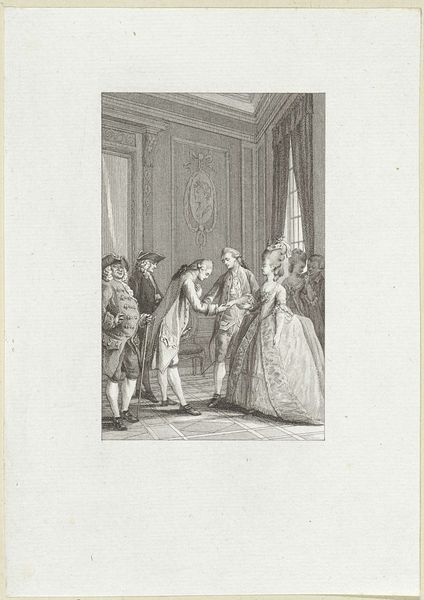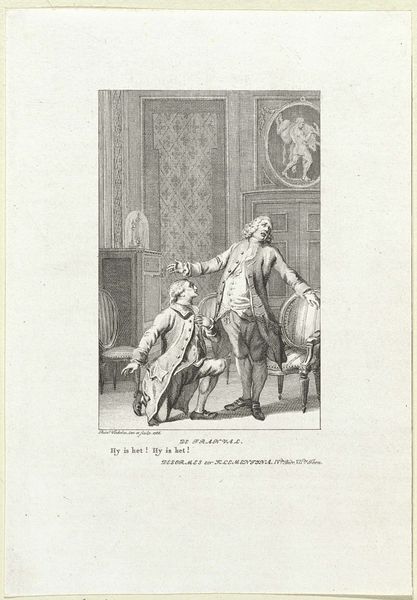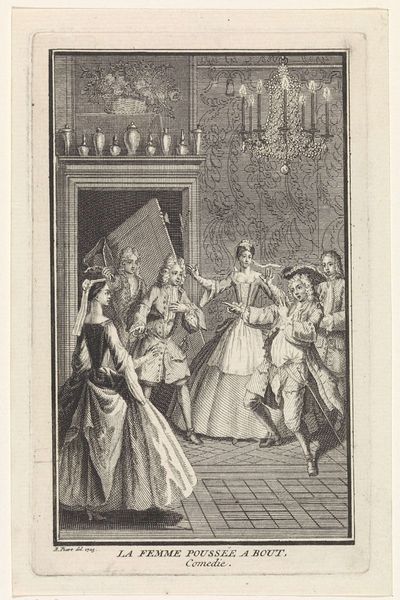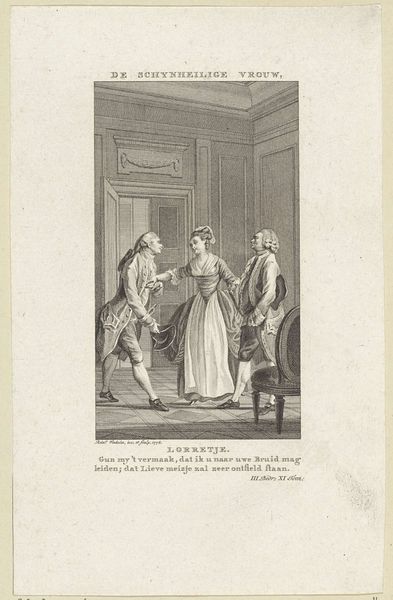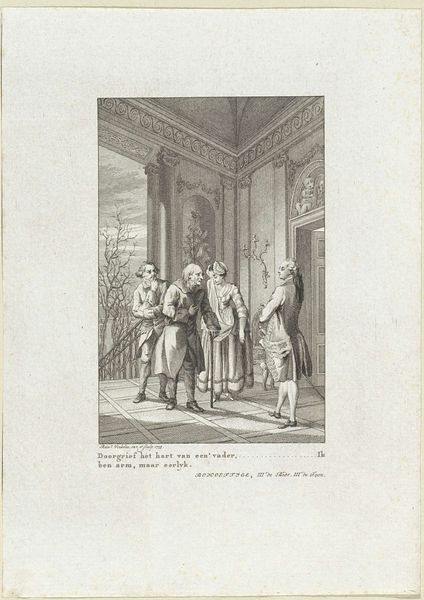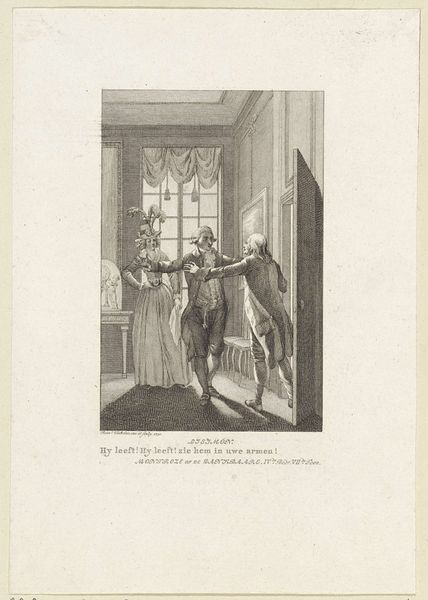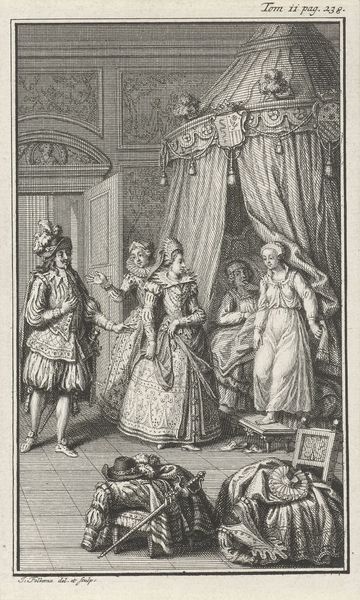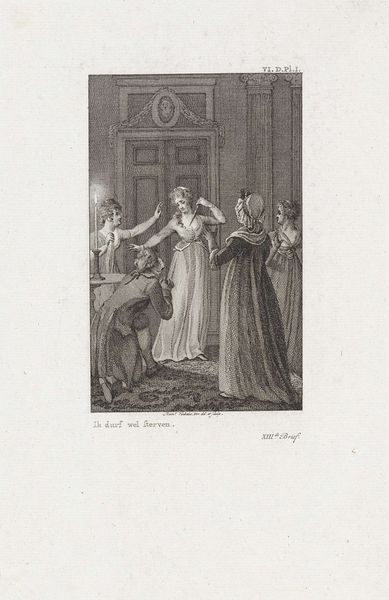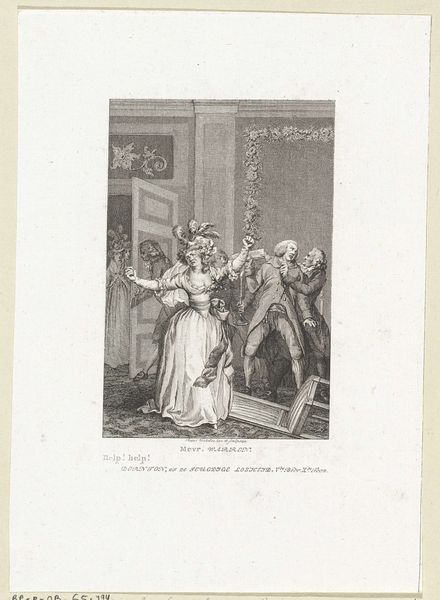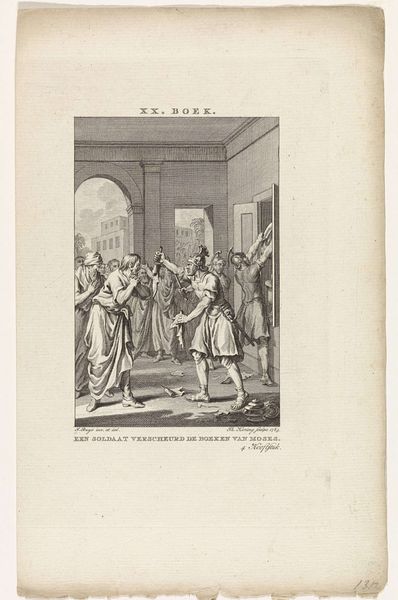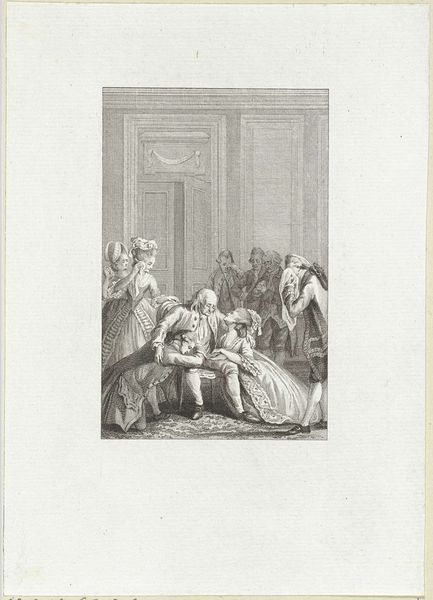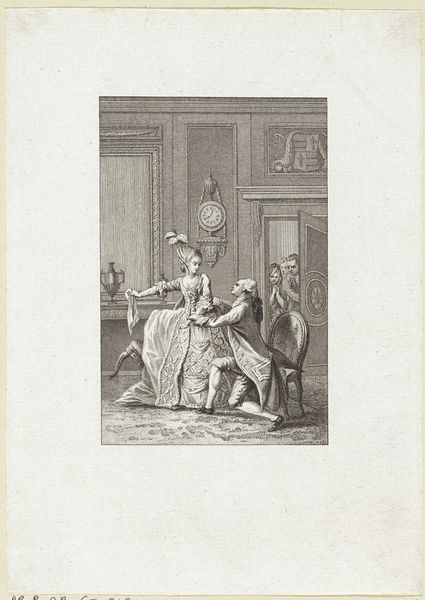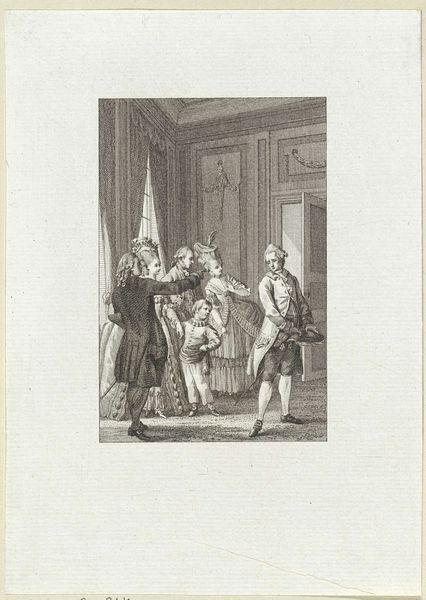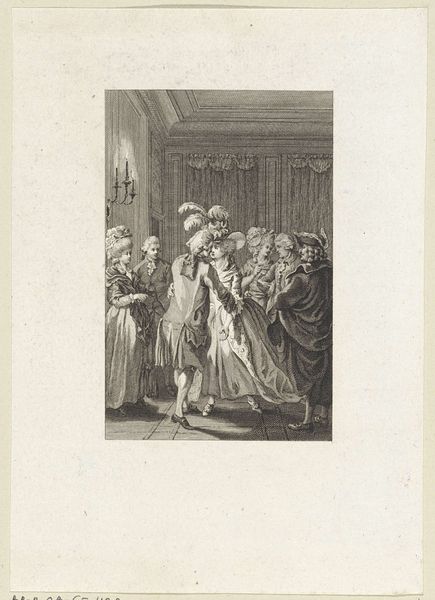
Dimensions: height 210 mm, width 149 mm
Copyright: Rijks Museum: Open Domain
Editor: This print, "Emilia en de graaf van Olsbach omhelzen elkaar" made in 1776 by Reinier Vinkeles, portrays a rather theatrical embrace. The setting looks like a stage. What kind of stories were these images telling, and who was seeing them? Curator: The late 18th century saw a boom in print culture, driven by expanding literacy and a growing middle class eager for entertainment and instruction. Prints like this one, readily available and relatively inexpensive, circulated widely. They weren't just aesthetic objects; they actively shaped public opinion and reinforced social norms. Do you notice the architectural details, like the archway in the background? Editor: Yes, it seems to give it a classical feeling. Curator: Precisely! This "classical" stage setting reflects the era's fascination with Neoclassicism and its ideals of order, reason, and morality. These settings frequently signaled scenes of particular socio-political weight and emphasized particular moral learnings. Also, consider the context in which this piece was created: it was produced during a time when the Dutch Republic was grappling with internal divisions and external pressures, making it an interesting piece for further exploration. Editor: So, these prints were actively contributing to a shared sense of culture and values, in a way. Curator: Absolutely. They visually promoted the status quo. Editor: I see! Thank you! I didn't think about how access and printmaking were very powerful tools, that made the information more broadly consumed at that time.
Comments
No comments
Be the first to comment and join the conversation on the ultimate creative platform.
